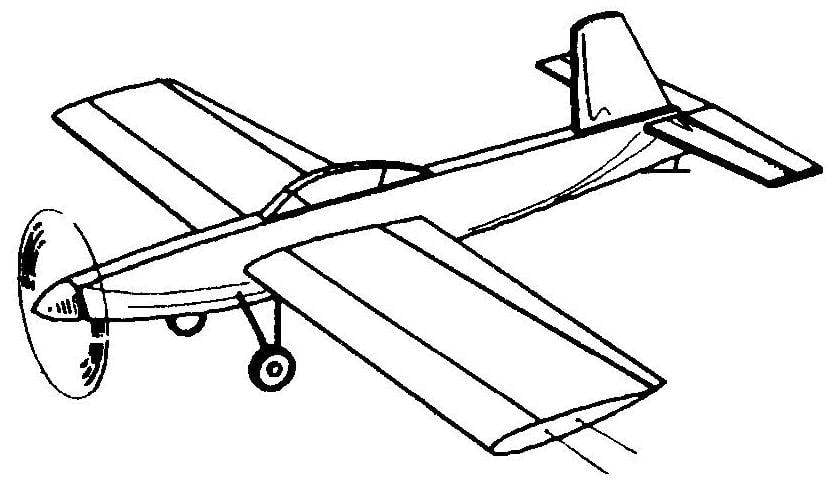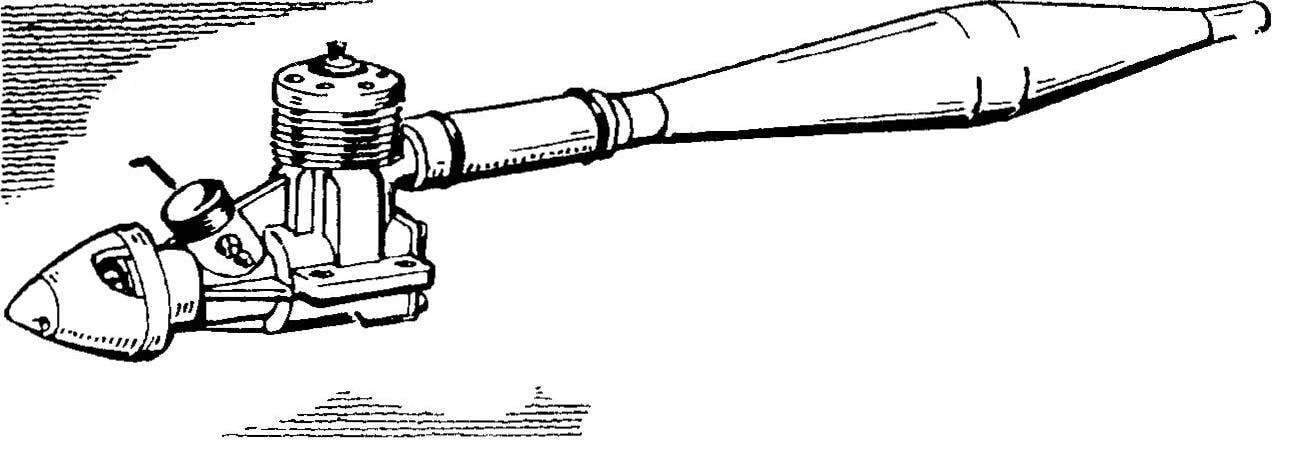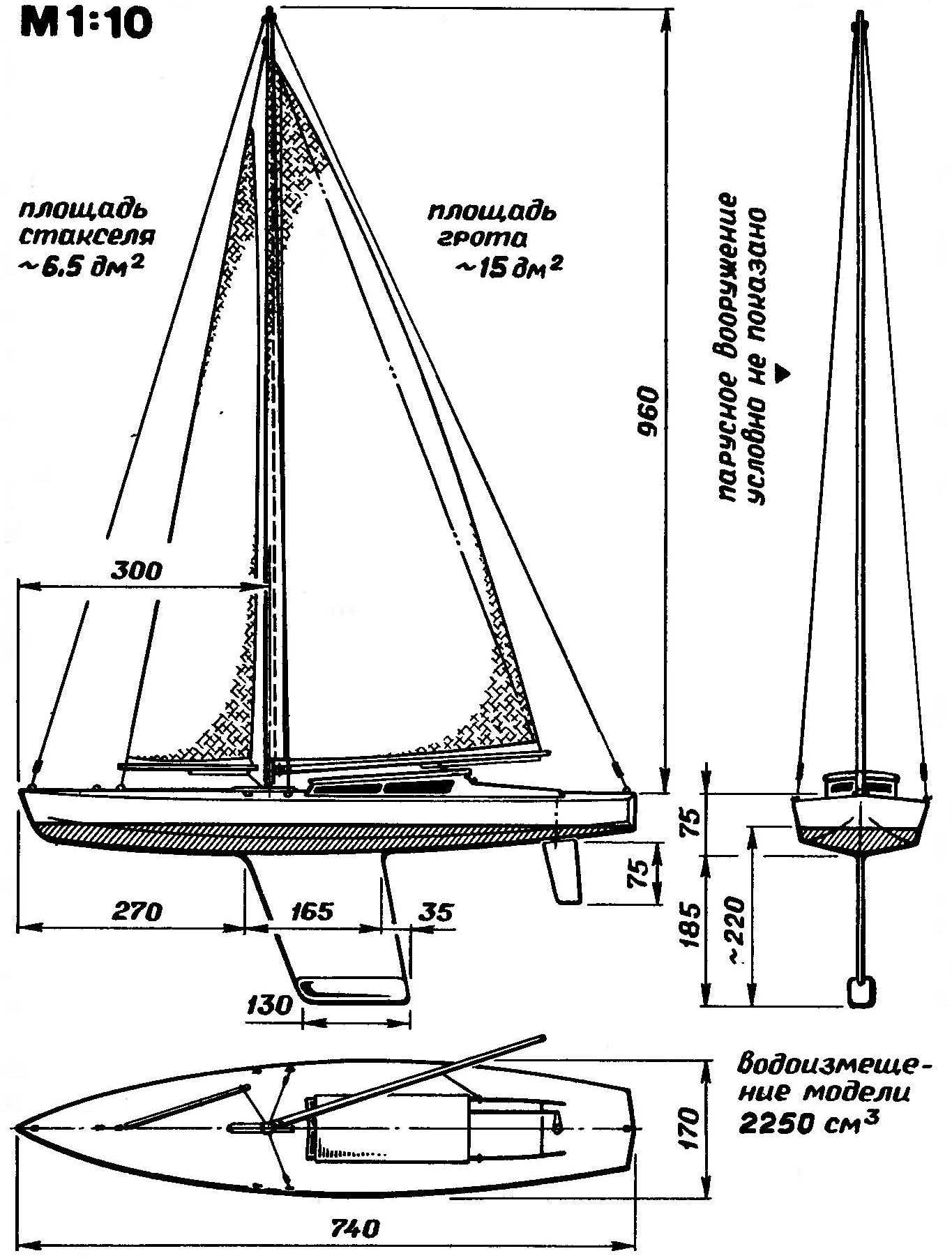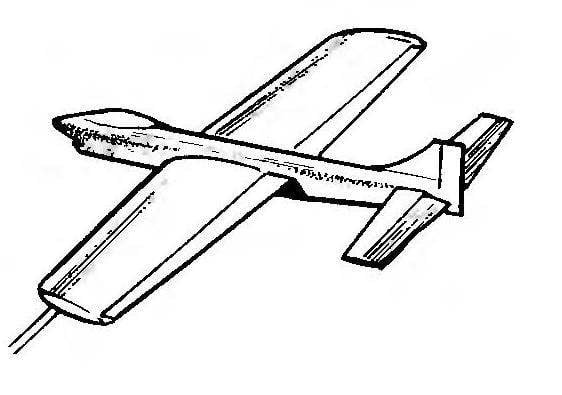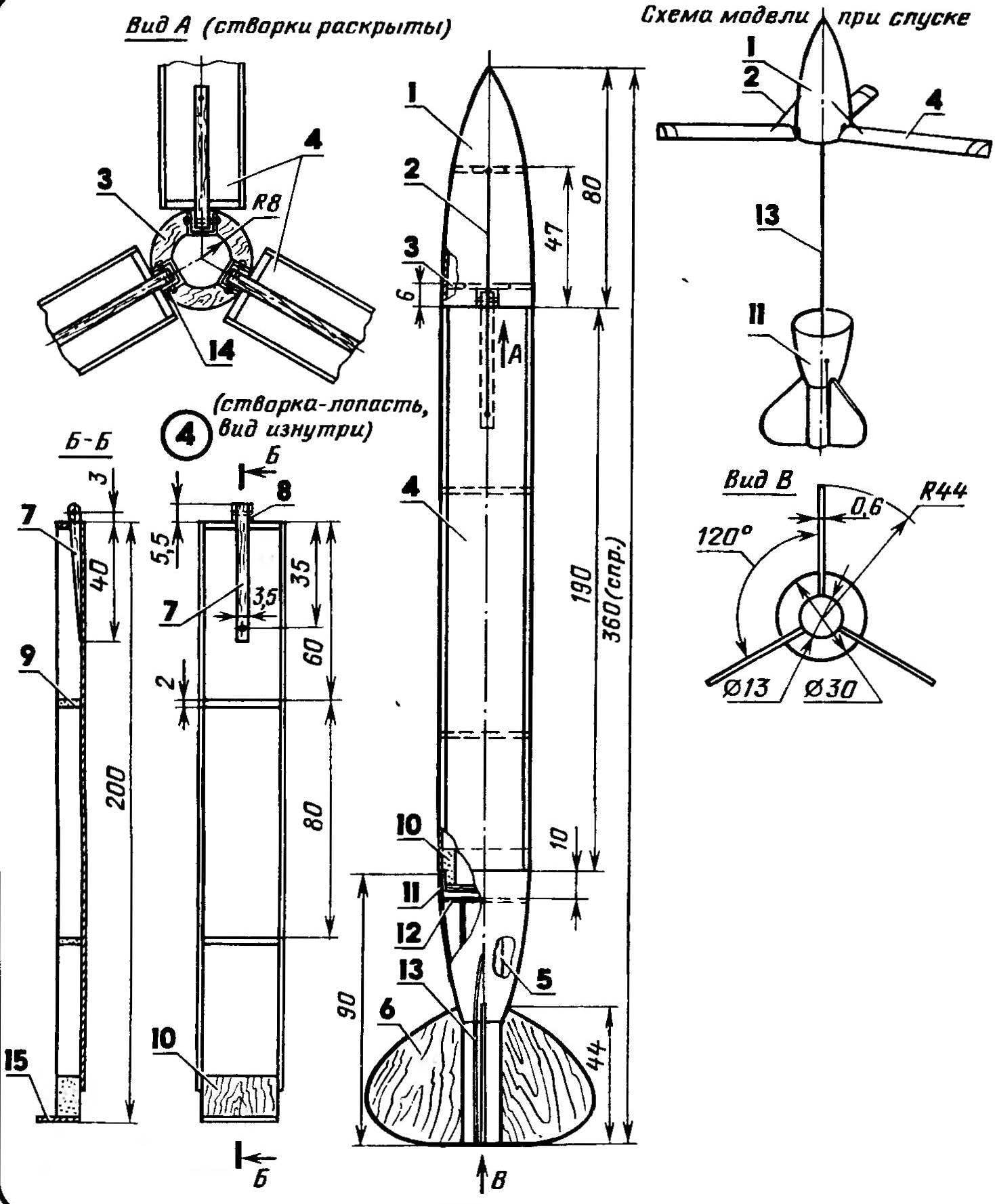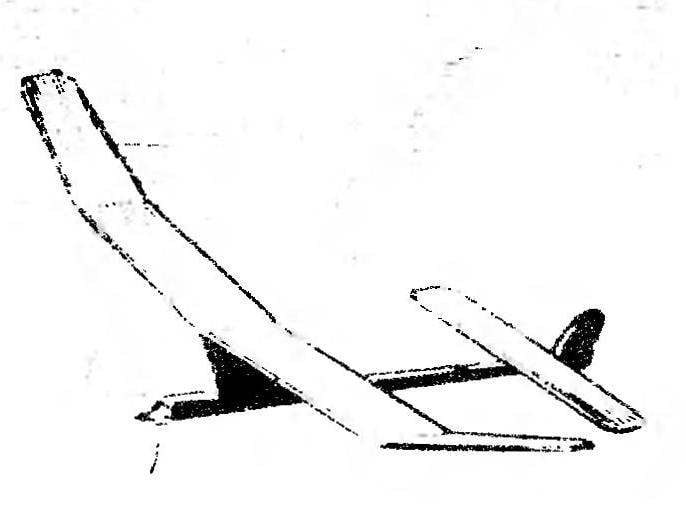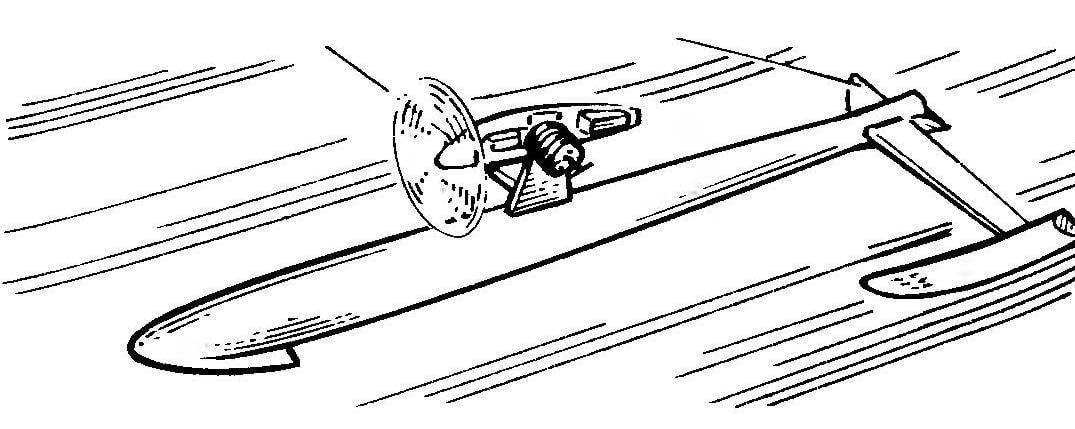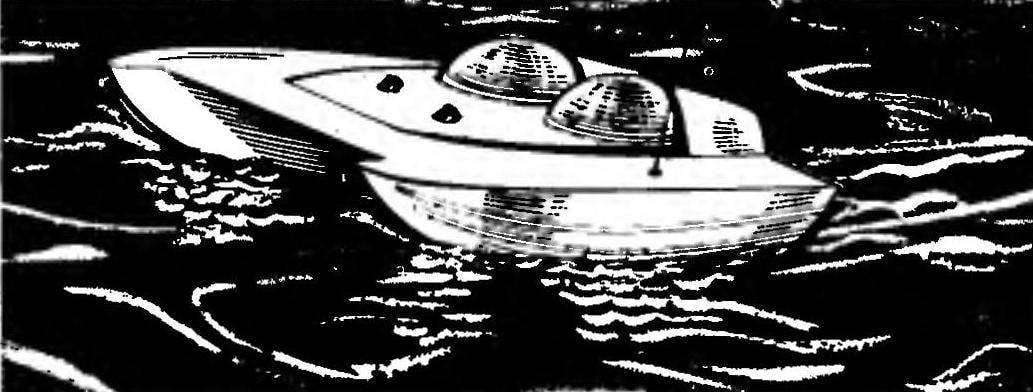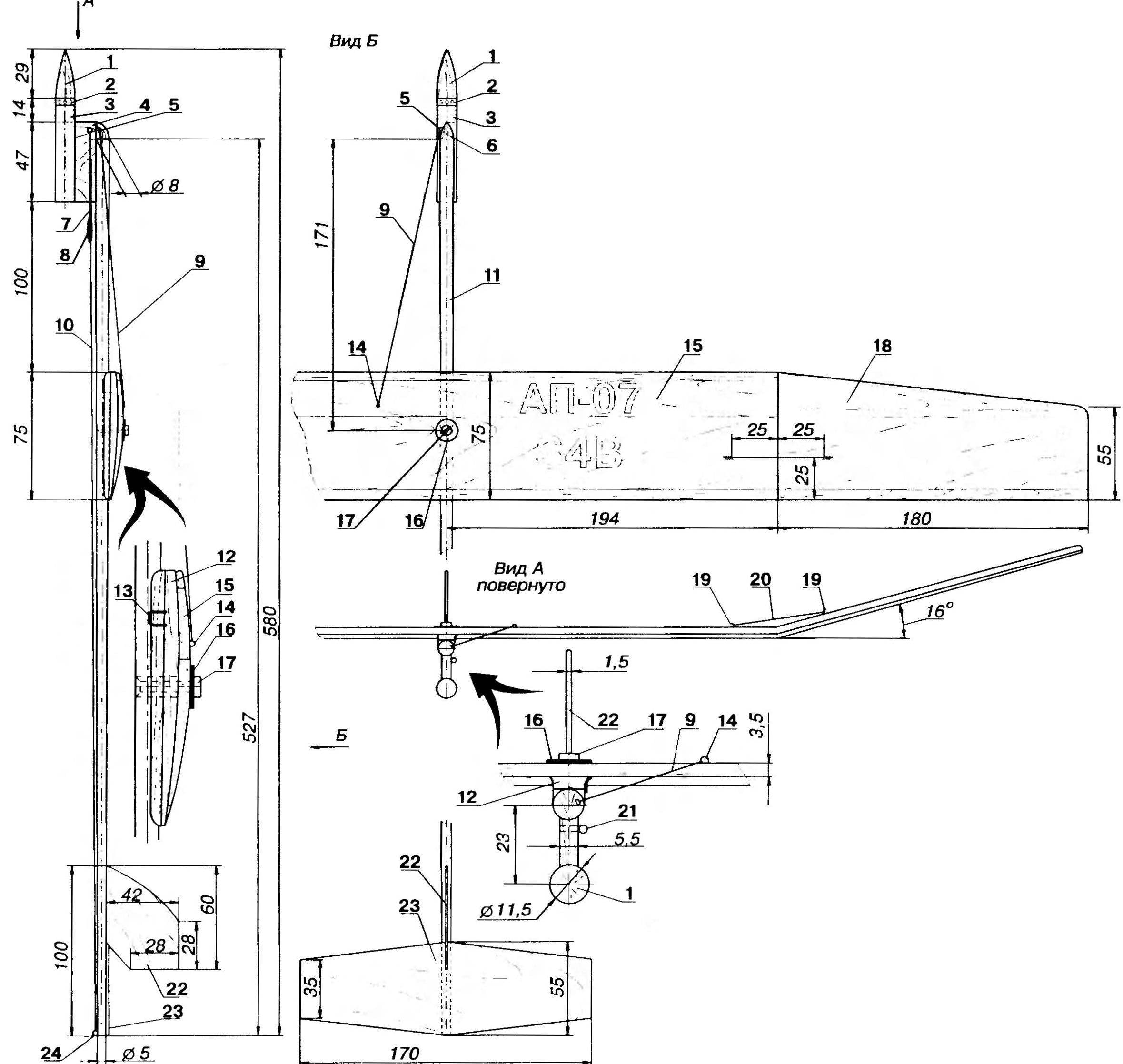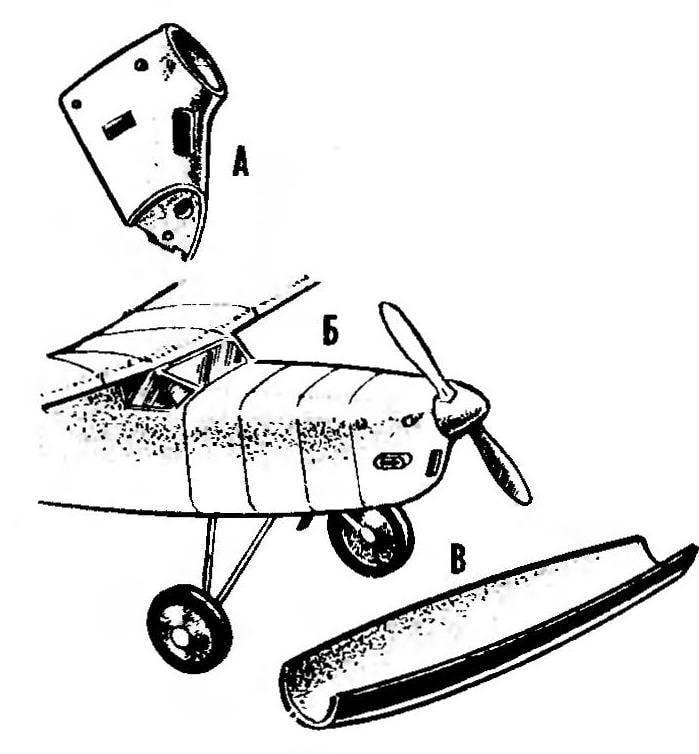
World of models
PIPE RESONANCE
 In the magazine we told about the methods of choosing the parameters of the resonant pipes (“modelist-Konstruktor” No. 9 for 1995) for highly accelerated engines. Fulfilling the wishes of modelers, editors have been asked to continue this theme of the master of sports V. Fontecha from Cherkassy (Ukraine). As you know, at the time of opening of the exhaust window motor is formed as the shock wave represents the process of propagation of a pressure pulse with velocity V=20 sqr(T) (T — exhaust gas temperature in OK).
In the magazine we told about the methods of choosing the parameters of the resonant pipes (“modelist-Konstruktor” No. 9 for 1995) for highly accelerated engines. Fulfilling the wishes of modelers, editors have been asked to continue this theme of the master of sports V. Fontecha from Cherkassy (Ukraine). As you know, at the time of opening of the exhaust window motor is formed as the shock wave represents the process of propagation of a pressure pulse with velocity V=20 sqr(T) (T — exhaust gas temperature in OK).
MANAGED YACHT “SOFKA”

CONTROL LINE AEROBATIC
 The first control line aerobatic models that use the engine capacity of 3.5 — 7 cm3 modelers-athlete transferring from Junior level to senior championship… What it be? Youth as the original sample often chooses superprotein equipment of the world Champions or Europe and tries to copy it. In the absence of speciliaties on the model put serial domestic motor and… due to ignorance of technical and technological methods such copy get poor results and wasting time. The other extreme — a massive increase in checked malakhovich models. So there are “pilotazhki” with mediocre flight characteristics that don’t bring any sporting success.
The first control line aerobatic models that use the engine capacity of 3.5 — 7 cm3 modelers-athlete transferring from Junior level to senior championship… What it be? Youth as the original sample often chooses superprotein equipment of the world Champions or Europe and tries to copy it. In the absence of speciliaties on the model put serial domestic motor and… due to ignorance of technical and technological methods such copy get poor results and wasting time. The other extreme — a massive increase in checked malakhovich models. So there are “pilotazhki” with mediocre flight characteristics that don’t bring any sporting success.
SAVE THE ROTOR
 For many years the rules of competition flying-th activities of the International Federation of air sports is a category microrocket with authorityrules descent. At the time, the athletes were given this technique a lot of attention, then about her for some reason for a long time seemed to be forgotten. However, there is now a surge of new interest in rotochutes—so among modelers athletes call missiles with authorityrules descent.
For many years the rules of competition flying-th activities of the International Federation of air sports is a category microrocket with authorityrules descent. At the time, the athletes were given this technique a lot of attention, then about her for some reason for a long time seemed to be forgotten. However, there is now a surge of new interest in rotochutes—so among modelers athletes call missiles with authorityrules descent.
TIMER IN RETRO-STYLE

HIGH SPEED “BABY”
 Created in our circle of control line speed model aeropittura school of a subclass with an internal combustion engine working volume of 1.5 cm3 the diagram is for a rarely used “asimmetrik”. In its construction—a number of technical solutions which allowed to improve starting (which is very important in the environment of the model newcomers) and performance. So to facilitate germination on a wave at lower than championship technique speeds the length of the nose redan decreased, while the angle of attack is his “sole” in the back work area a bit increased. Absolutely unconventional technique — Vegas the front edge of the redan on the corner about 8′ in the view of the model from the front. This solution ensures a reliable start, eliminating incorrect even with the cast time of the glider inside the running circle (hydrodynamic lifting force developed on the “sole” of redan, has a component directed towards the left side). In addition, an important factor of removal of spatter from under the redan on the right side, that is away from the disk rotation is offset to the left of the propeller power plant.
Created in our circle of control line speed model aeropittura school of a subclass with an internal combustion engine working volume of 1.5 cm3 the diagram is for a rarely used “asimmetrik”. In its construction—a number of technical solutions which allowed to improve starting (which is very important in the environment of the model newcomers) and performance. So to facilitate germination on a wave at lower than championship technique speeds the length of the nose redan decreased, while the angle of attack is his “sole” in the back work area a bit increased. Absolutely unconventional technique — Vegas the front edge of the redan on the corner about 8′ in the view of the model from the front. This solution ensures a reliable start, eliminating incorrect even with the cast time of the glider inside the running circle (hydrodynamic lifting force developed on the “sole” of redan, has a component directed towards the left side). In addition, an important factor of removal of spatter from under the redan on the right side, that is away from the disk rotation is offset to the left of the propeller power plant.
FLYING IN THE RAINBOW SPRAY
 Lately becoming more popular competitions on water-motor sports. The exciting drama of racing racing colorful boats, iridescent splashes of water, enthusiastic audience! RC racing boat are not less popular among athletes of all ages. The design of such micropolygon simple. The model is quite well-known motor type “Mabushi-540” equipped with a two-bladed propeller with a diameter of 35 mm and a step 47 mm. To power the installed battery 7.2 V/1.2 A*h Nickel-cadmium elements. Management — with two-channel proportional equipment. The engine speed change by the speed controller and the direction of the path of movement of the steering machine.
Lately becoming more popular competitions on water-motor sports. The exciting drama of racing racing colorful boats, iridescent splashes of water, enthusiastic audience! RC racing boat are not less popular among athletes of all ages. The design of such micropolygon simple. The model is quite well-known motor type “Mabushi-540” equipped with a two-bladed propeller with a diameter of 35 mm and a step 47 mm. To power the installed battery 7.2 V/1.2 A*h Nickel-cadmium elements. Management — with two-channel proportional equipment. The engine speed change by the speed controller and the direction of the path of movement of the steering machine.
ROCKET FROM BIYSK

POUNDING, SO GOOD!
 Many models can be made to forgotten the method, by squeezing the sheet metal. Extortion is used for any thin-walled parts (e.g. fairings, cowlings, shrouds, wings, wheels, and similar). Often they are made of brass or aluminum alloys. The material is pre-annealed with a pair of scissors and cut the workpiece with considerable allowances. The tools serve as a mandrel, anvil and various hammers. The process of knockout s is the stretching of the material when its thickness decreases, and in the sediment, which implies an increase of the thickness.
Many models can be made to forgotten the method, by squeezing the sheet metal. Extortion is used for any thin-walled parts (e.g. fairings, cowlings, shrouds, wings, wheels, and similar). Often they are made of brass or aluminum alloys. The material is pre-annealed with a pair of scissors and cut the workpiece with considerable allowances. The tools serve as a mandrel, anvil and various hammers. The process of knockout s is the stretching of the material when its thickness decreases, and in the sediment, which implies an increase of the thickness.
